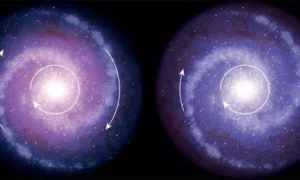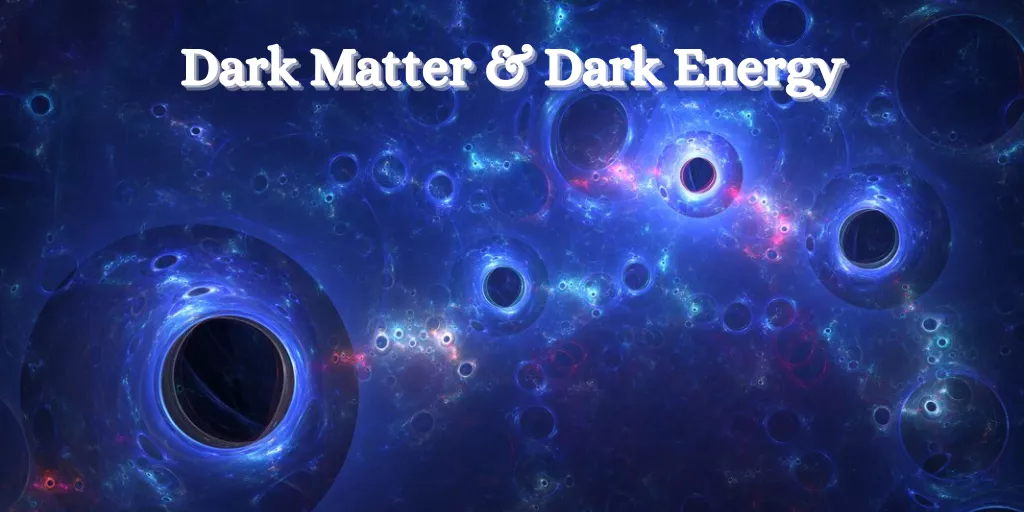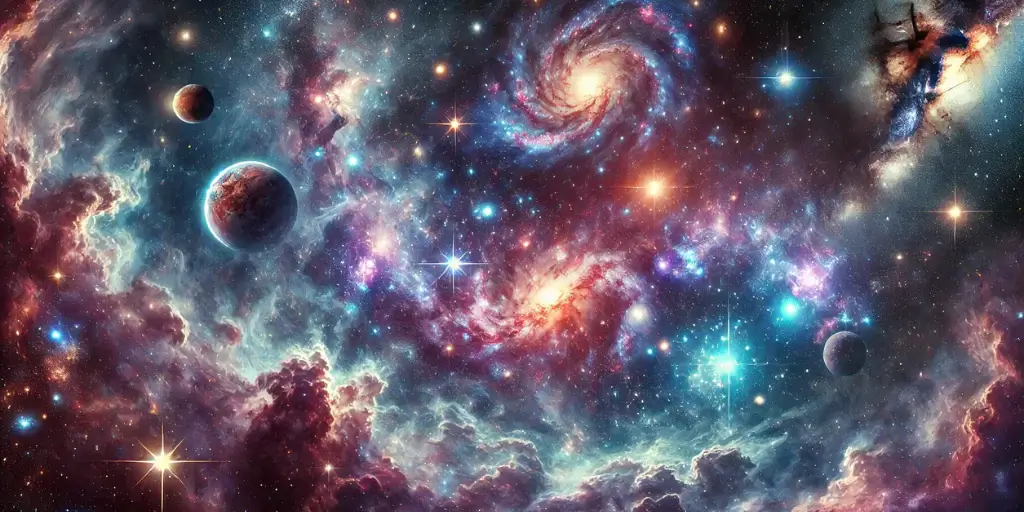Have you ever pondered what makes up the majority of the universe? When we look at the stars, galaxies, and planets, it seems as though we can see everything out there. Surprisingly, everything we can see — from bright stars to cosmic dust — accounts for less than 5% of the universe! The rest is made up of enigmatic, invisible particles known as dark matter & dark energy.
What is dark matter?

1. Dark matter is a form of matter that does not emit, reflect, or absorb light; hence, it is fully invisible. Scientists cannot see it directly, but they are aware of its existence due to its effect on gravity.
2. For example, galaxies spin so quickly that they should collide, but they don’t. This indicates there must be an invisible “glue” binding them together, which is dark matter.
3. Scientists estimate that dark matter accounts for around 27% of the cosmos.
Key Facts About Dark Matter:
- It does not emit or absorb light.
- It possesses mass, which implies gravity.
- It could be made of yet-undiscovered particles.
- We can only discern it by observing its gravitational impacts on visible matter.
What is Dark Energy?

1. While dark matter holds the cosmos together, dark energy does the opposite: it pushes everything apart! Dark energy is a mysterious force that causes the universe to expand at an increasing rate throughout time.
2. Astronomers examining distant supernovae made a startling discovery in 1998: the cosmos is not only expanding, but also accelerating. That suggests some invisible energy is opposing gravity and pushing galaxies apart.
3. Scientists believe dark energy accounts for around 68% of the cosmos, making it the main component of everything that exists!
Key Facts About Dark Energy:

- It causes the universe’s expansion to accelerate.
- It’s uniformly distributed throughout space.
- Its nature remains one of the greatest puzzles in science.
Why Are They Important?
1. Understanding dark matter and dark energy allows us to answer the most important issue in science: what does the cosmos consist of?
2. Without dark matter, galaxies would not exist as we know them. Without dark energy, the universe’s expansion could have slowed or ended altogether.
3. Scientists think that by researching them, they may discover the universe’s ultimate fate – whether it will continue to expand indefinitely, slow down, or collapse in a “Big Crunch.”
Conclusion:
Dark matter and dark energy remind us that there is far more to the cosmos than meets the eye. Even though we can’t see them, their effects influence the world around us. As technology advances, astronomers and physicists grow closer to discovering their mysteries. Understanding these strange cosmic constituents could be the key to the next major discovery in space science.
Frequently Asked Questions (FAQs)
1. What is dark matter in simple words?
Dark matter is an invisible material in space that doesn’t emit light but has gravity. It helps keep galaxies together and makes up about 27% of the universe.
2. How do scientists know dark matter exists if they can’t see it?
Scientists observe how stars and galaxies move. Their speed and rotation can only be explained if there’s extra invisible mass — that’s how dark matter is detected through gravity.
3. What is dark energy?
Dark energy is a mysterious force that makes the universe expand faster over time. It acts like a repelling energy that pushes galaxies away from each other.
4. How much of the universe is made up of dark matter and dark energy?
About 95% of the universe is invisible: 27% is dark matter, 68% is dark energy, and only 5% is normal matter that we can see.
5. Can dark matter and dark energy be seen or touched?
No. They cannot be seen, touched, or detected with ordinary instruments because they don’t interact with light or normal matter in the usual way.
6. Why are dark matter and dark energy important?
They shape the structure, speed, and future of the universe. Without dark matter, galaxies wouldn’t form; without dark energy, the universe’s expansion wouldn’t accelerate.
7. Could dark matter and dark energy be connected?
Some scientists believe they might be related parts of a single cosmic phenomenon, but this is still just a theory. Research is ongoing to find out.
8. What could be the future of the universe because of dark energy?
If dark energy continues to dominate, the universe will keep expanding forever, and galaxies will move farther apart — leading to a “cold, dark” future.






